Traduzione generata automaticamente
Mostra originale
Mostra traduzione
Pierre Pallut
Original lithograph
Signed in pencil on the lower right corner
Numbered on 100 copies, 62/100
Copy on Arches vellum
Format 50 x 65 cm.
Excellent condition
Pierre Pallut was born in 1918 in Gommerville in Eure-et-Loir. He worked for a long time in the workshops of the Grande Chaumière in Paris, while never having received any real official teaching. After returning from the war in 1940, he discovered Van Gogh and Gauguin. However, it was for Renoir and Bonnard that he felt a determining enthusiasm. He contemplated and studied their paintings.
In Paris, he exhibited at the short-lived Salon des Moins de Trente Ans, at the Salon d'Automne, of which he was named a member in 1938, and at the Salon de Mai. In 1946-47, he participated in the group "Black is a color", presented at the Maeght Gallery in Paris by Jacques Kober. He rubs shoulders with Braque, Matisse, Bonnard, Manessier, Rouault, Geer Van de Velde, Atlan, etc.
Around 1950, he abandoned the exhibitions, but continued to work. In 1953, he collaborated with Braque in the realization of the three ceilings of the Salle des Etrusques in the Louvre Palace.
He resumed exhibitions around 1960. from 1962, he exhibited at the Salon des Réalités Nouvelles, of which he became a member in 1967. He also participated in other collective exhibitions abroad: "Art français" in Warsaw in 1948; "Art français" in Charlottenborg in 1950; "Douze peintres français" Douze peintres américains" in New York; "Young Painters" in 1952 in Aberdeen, Edinburgh, Glasgow; in 1964 and 1966, Biennale de Menton; in 1965, "Hommage à Braque" in Paris.
Pierre Pallut also shows his works in personal exhibitions. The first one took place in 1948 at the Maeght Gallery in Paris. It is followed by many other exhibitions: in 1970, Centre culturel Maydieu in Paris; in 1972, in London, Prudhoe Gallery; in 1974, in Paris, Streaming Gallery; in 1976, Monique Delcourt in Valenciennes; in 1977, galerie du Centaure, in Cannes; in 1982, galerie Coard in Paris; in 1989, 1990 and 1994, in Paris, galerie Lambert Rouland.
In 1946, the Prix de la Jeune Peinture, awarded for the first time, was given to Pierre Pallut. Also for his first award, the Prix Fénéon was given to him in 1949.
Pierre Pallut painted still lifes and portraits, noted for the distinction of their color ranges. He also made wall decorations, such as the mosaic in La Ciotat in 1971, the kindergarten in Le Cannet in 1976.
The work of Pierre Pallut is split in its continuity. from 1948, the painter operates indeed a sudden evolution towards the abstraction. However, despite the abandonment of form, his abstract work is distinguished by a delicacy that remains from the first period of the painter and can be described as post-impressionism. from Klee, Pierre Pallut retains the freedom of language but does not forget Renoir. In this second period, he continues to pursue the iridescence of his own inner vision, now abstract.
Pierre Pallut
Litografia originale
Firmata a matita in basso a destra
Numerato su 100 copie, 62/100
Copia su pergamena Arches
Formato 50 x 65 cm.
Condizioni eccellenti
Pierre Pallut è nato nel 1918 a Gommerville, nell'Eure-et-Loir. Lavora a lungo negli atelier della Grande Chaumière di Parigi, pur non avendo mai ricevuto un vero e proprio insegnamento ufficiale. Al ritorno dalla guerra, nel 1940, scopre Van Gogh e Gauguin. Tuttavia, è per Renoir e Bonnard che prova un entusiasmo determinante. Contempla e studia i loro dipinti.
A Parigi espone al breve Salon des Moins de Trente Ans, al Salon d'Automne, di cui viene nominato membro nel 1938, e al Salon de Mai. Nel 1946-47 partecipa al gruppo "Il nero è un colore", presentato alla Galleria Maeght di Parigi da Jacques Kober. Si confronta con Braque, Matisse, Bonnard, Manessier, Rouault, Geer Van de Velde, Atlan, ecc
Intorno al 1950 abbandona le mostre, ma continua a lavorare. Nel 1953 collabora con Braque alla realizzazione dei tre soffitti della Salle des Etrusques del Palazzo del Louvre
Riprende le mostre intorno al 1960. Dal 1962 espone al Salon des Réalités Nouvelles, di cui diventa membro nel 1967. Partecipa anche ad altre mostre collettive all'estero: "Art français" a Varsavia nel 1948; "Art français" a Charlottenborg nel 1950; "Douze peintres français" Douze peintres américains" a New York; "Young Painters" nel 1952 ad Aberdeen, Edimburgo, Glasgow; nel 1964 e 1966, Biennale di Mentone; nel 1965, "Hommage à Braque" a Parigi
Pierre Pallut espone le sue opere anche in mostre personali. La prima ha luogo nel 1948 alla Galleria Maeght di Parigi. Seguono molte altre mostre: nel 1970, Centre culturel Maydieu a Parigi; nel 1972, a Londra, Prudhoe Gallery; nel 1974, a Parigi, Streaming Gallery; nel 1976, Monique Delcourt a Valenciennes; nel 1977, galerie du Centaure, a Cannes; nel 1982, galerie Coard a Parigi; nel 1989, 1990 e 1994, a Parigi, galerie Lambert Rouland
Nel 1946, il Prix de la Jeune Peinture, assegnato per la prima volta, è stato assegnato a Pierre Pallut. Sempre per il suo primo riconoscimento, nel 1949 gli viene assegnato il Prix Fénéon.
Pierre Pallut dipinse nature morte e ritratti, noti per la distinzione delle gamme cromatiche. Ha anche realizzato decorazioni murali, come il mosaico di La Ciotat nel 1971, l'asilo di Le Cannet nel 1976
L'opera di Pierre Pallut è divisa nella sua continuità. A partire dal 1948, il pittore opera infatti un'improvvisa evoluzione verso l'astrazione. Tuttavia, nonostante l'abbandono della forma, la sua opera astratta si distingue per una delicatezza che rimane dal primo periodo del pittore e che può essere descritta come post-impressionismo. da Klee, Pierre Pallut conserva la libertà del linguaggio ma non dimentica Renoir. In questo secondo periodo, continua a perseguire l'iridescenza della propria visione interiore, ora astratta.
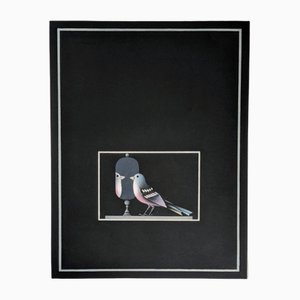
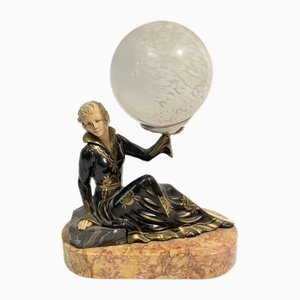
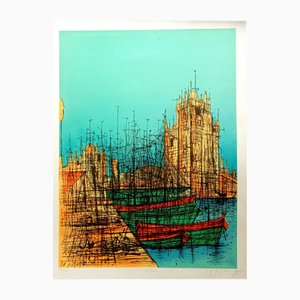
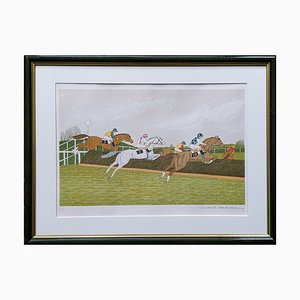
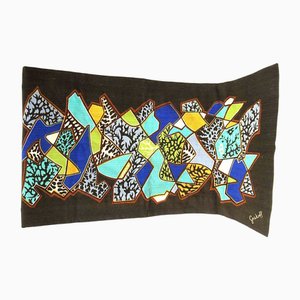

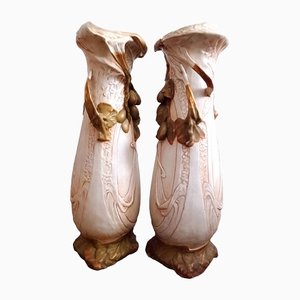
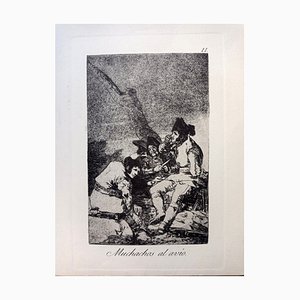
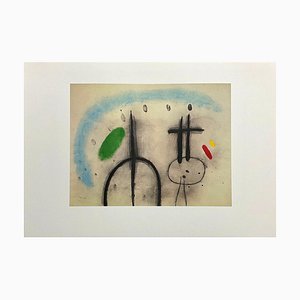
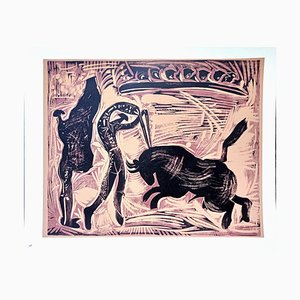

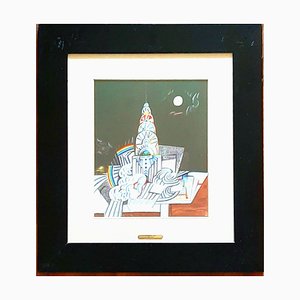
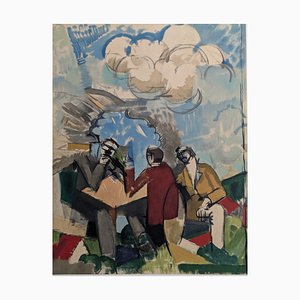
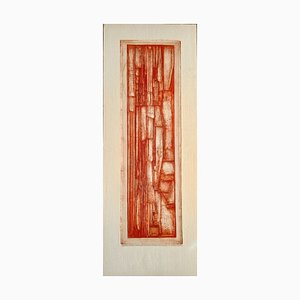

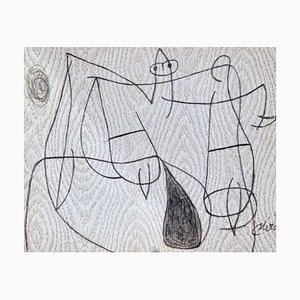
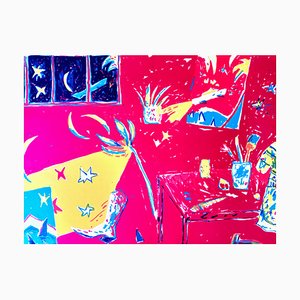
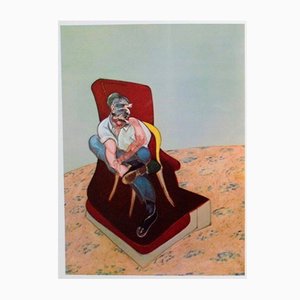
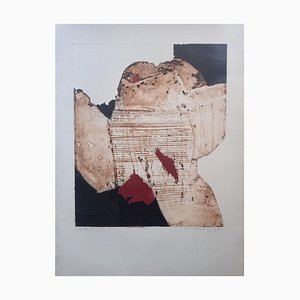
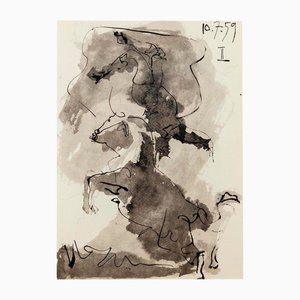
Contattaci
Fai un'offerta
Abbiamo notato che sei nuovo su Pamono!
Accetta i Termini e condizioni e l'Informativa sulla privacy
Contattaci
Fai un'offerta
Ci siamo quasi!
Per seguire la conversazione sulla piattaforma, si prega di completare la registrazione. Per procedere con la tua offerta sulla piattaforma, ti preghiamo di completare la registrazione.Successo
Grazie per la vostra richiesta, qualcuno del nostro team vi contatterà a breve.
Se sei un professionista del design, fai domanda qui per i vantaggi del Programma Commerciale di Pamono